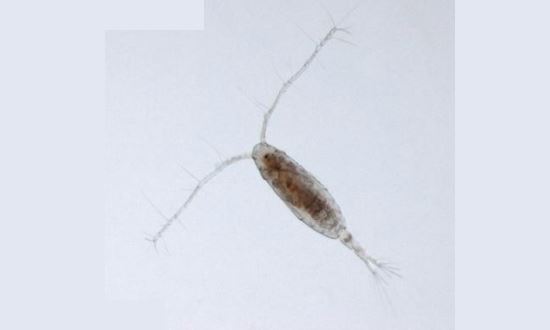For the male, the posterior prosome features 3-6 dorsolateral spines, providing a distinctive appearance. Pereiopod 5, one of its appendages, is relatively small, uniramous (unbranched), and displays an asymmetric structure. The left basis of pereiopod 5 stands out with 3 large spines and 1-2 smaller proximal spines, while exopod segment 1 exhibits spinules on its anterior surface. Exopod segments 2 and 3 have an anterior spine shorter than the posterior spine, with the distal border of the third segment being slightly convex. The right exopod segment 2 features outer edge spines, and the inner lobe is long and slender, with the proximal part of the tip tapering and extending more than the distal part. Ursosome somites 2-4 are marked by a row of dorsoposterior denticles. The caudal rami have a mean length-width ratio of 1.66.
In the female, the posterior prosome is adorned with 4-7 spines and fine hairs on the ventro-posterior margin. The last segment of pereiopod 5 is modified into a long and slender spine. The lateral faces of the genital complex are characterized by rows of denticles, which consistently extend onto the posterior half of the somite. The length from the anteroventral border of the genital complex to the apex of the genital swelling measures approximately 0.28 times the length of the genital complex. A row of spinules is typically found on the dorsoposterior margin of the genital complex and the second urosome somite. The caudal ramus has a mean length-width ratio of 2.72.
